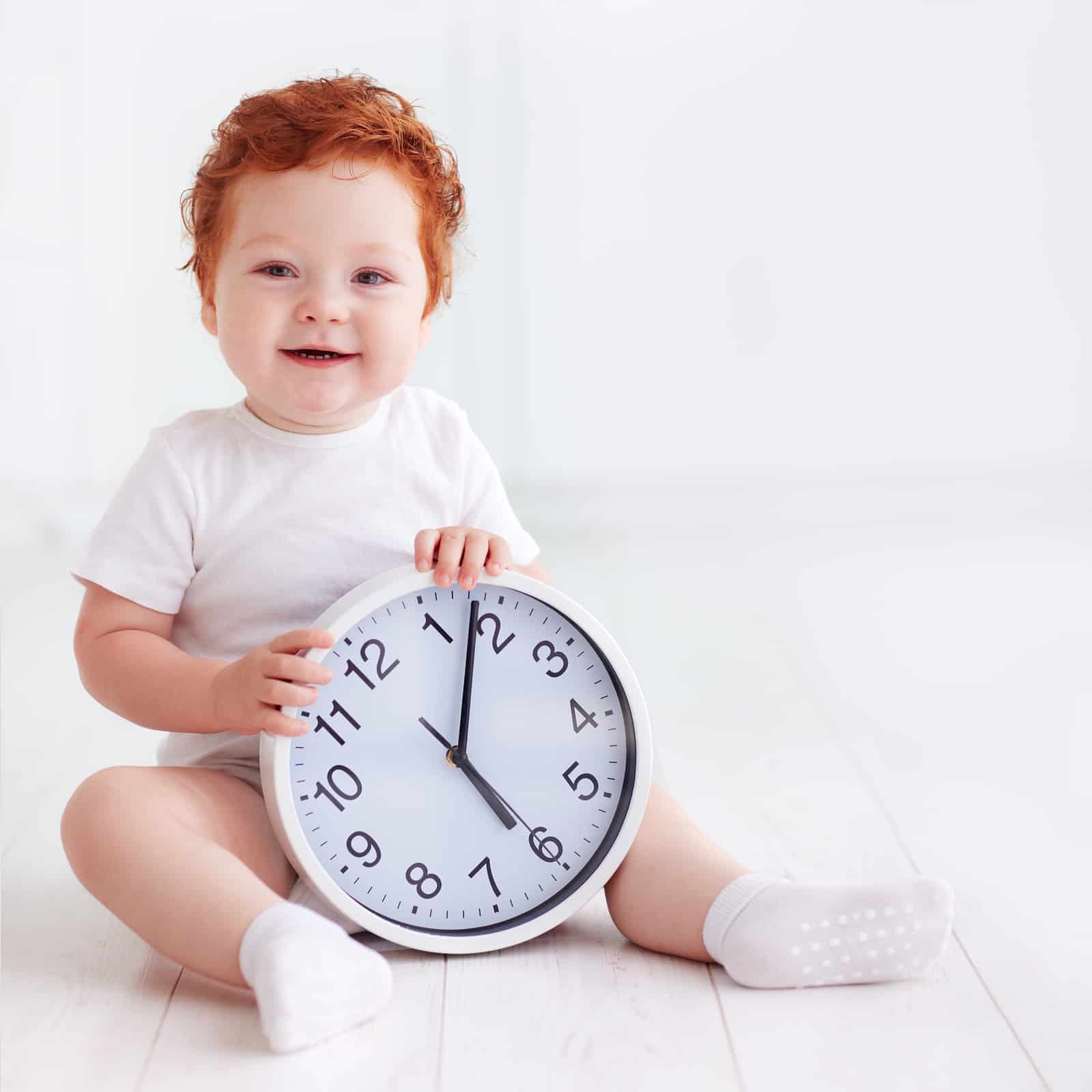It’s that time of year where we start getting calls and emails from clients in a bit of a worry or slight panic. “How do we adjust for the time change?” “Is this going to be as awful as we think it will be?” “What is the best way for us to prepare Daylight Savings!?”
The good news is that with a little planning, most babies and young kids do very well with the Daylight Savings time change and ‘falling back’. It may not seem like it, but “falling back” and losing 1 hour, is generally harder than in the spring where we ‘spring forward’ and gain 1 hour. This is because wake and bedtimes get pushed an hour earlier and we need to gain back that hour in the schedule that has been lost.
Have no fear, we’ve got you covered. Neither you, your baby or child should lose any sleep over this coming time change!

Baby / Child & Time Change Adjustment Methods
There are three primary options for helping to transition your baby or young child onto the new schedule for Fall. Below we detail out how to do them.
Option 1: Gradual Schedule Transition
Using this method takes a bit of planning. Usually a week is sufficient.
Here’s what you’ll do:
Every few days in the week prior to the change, nudge your child’s bedtime back 10-15 minutes. This will put their morning wake time 10-15 minutes later. Ultimately, you will arrive at an hour difference.
Example: Your baby or child usually goes to bed at 7:30 pm and wakes at 7 am. This schedule works well for your family. Here is how it looks with 15 minute adjustments:
Nights 1 & 2 – bedtime 7:45 pm / wake 7:15 am.
Nights 3 & 4 – bedtime 8 pm / wake 7:30 am.
Nights 5 & 6 – bedtime 8:15 pm / wake 7:45 am.
Nights 7 & 8 – bedtime 8:30 pm / wake 8 am.
After the 8th night, you would have made up the 1 hour time difference for Daylight Savings! It’s worth noting that some babies, especially very young ones, may need a few weeks to transition vs an older baby or child of 7-8 months+.
Option 2: Different Schedules
With this option, you will opt to essentially keep their bedtime and wake times the same all year round, adjusting with the time change. This creates a “Summer” and “Winter” schedule.
Example: Your baby or child’s Summer schedule is 7:30 am wake for the day and 8 pm bedtime. Their Winter Schedule would then be 6:30 am wake for the day and 7 pm bedtime.
Option 3: Baby or Child-led Schedule Transition
Here’s what you’ll do:
Allow your baby or child to gradually adjust on their own. This can take anywhere from 2 weeks to a few months. They may sleep in a little later one day or for a few days. When they do this, you would appropriately push their bedtime a little later. Over time you would reach your new bedtime.
Generally speaking, the most favored method is usually a gradual transition over a week. Sometimes families can shorten that week to just 3 or 4 days, depending on how their baby or child acclimates. Other times, families opt to allow the child to set the pace.
We hope these options for how to adjust your child’s schedule during Daylight Savings time helped. If you have any questions about Daylight Savings and your child schedule or sleep in general, please feel free to contact us. We specialize in helping families sleep better as well as all things newborn and newborn care related!
The holidays are fast approaching! If you would like to give the gift of sleep, consulting or nanny placement to one of your loved ones, please reach out. All of our services are available nationwide!
Have questions about your baby or parenting journey? Please reach out. We are here to help!
www.TheEarlyWeeks.com or contact us HERE.
![]()
